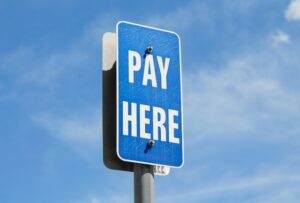How to Buy a Taken Domain Name
Got a business idea? All set to buy a domain name so you can start dominating online? Some domains are readily available – others, less so. Here is our step-by-step guide to buying your dream domain name.
Option 1: buy a domain name from a domain registrar
Choose a Domain Name:
Perform a domain name search. Pick a name that represents your business or personal brand. Keep it short, memorable, and easy to spell. Choose the appropriate domain extension (e.g., .com, .net, .org).
Check Availability:
Use a domain registrar (like GoDaddy, Namecheap, Google Domains) to check if your desired website name is available.
Select a Domain Registrar
Compare prices and services from domain registrars. Understand how domain locks and transfer processes work, and familiarize yourself with renewal costs and web hosting services. Most domain registrars offer promotions of a free domain name with a year renewal to register a domain name.
A few providers include:
GoDaddy- web hosting company, domain name registrar and marketplace offering many domain extensions to find your desired domain.
Namecheap- domain name registrar and marketplace, offering whois database search and domain name registration to register a domain name.
Bluehost- web hosting service and domain registrar.
Google Domains- no longer operational after signing a deal with Squarespace.
Register the Domain
Once you’ve chosen a domain name registrar, follow these steps:
Create an Account:
1. Sign up with the domain name registrar.
Do your research and pick one whose services you like.
2. Add to Cart
Select your desired web address and add it to your cart.
3. Domain Name Registration Process:
Decide how long you want to hold the domain registration. (typically 1-10 years). Auto-renewal is another option to own the asset indefinitely. Choose your domain name registrars wisely!
4. Enable Domain Privacy Protection (optional):
This hides your contact details from public records for added privacy protection.
5. Make Sure Domain is Locked:
To avoid unauthorized use or theft, make sure the domain is locked in the current registrar.
6. Pay for the Domain extensions
Enter your payment details and complete the purchase for your desired domain name registration.
7. Set Up Your Website’s domain
Connect the unique domain to a website or email service, or hold onto it for future use or domain name trading to the highest bidder.
That’s it! You now own the domain name as long as you continue to pay the yearly renewal costs within the registration period. Keep domain privacy enabled when registering a new domain.
Option 2: Buy a domain name with a broker
Find a Broker: Choose a domain broker service.
Submit a Request: Provide the domain name you want to acquire and your budget.
Broker Negotiation: The broker contacts the current domain owner and negotiates on your behalf.
Agreement: Once a price is agreed upon, the broker secures the domain.
Transaction: Complete payment through the broker’s secure system.
Transfer: The domain is transferred to your account.
This simplifies the process by letting the broker handle negotiations and logistics on your behalf. The broker can typically save you money with their expert negotiation tactics and industry-wide relationships. They can also provide the necessary domain name contract.
From a marketing perspective, having the right domain is especially importan; you don’t want to settle for an unworthy alternative. Maybe you’ve already tried to find decent alternatives, but they’re not really the ones you want. Or, you have thought about using a different TLD (Top-Level Domain).
While that is a feasible option, it can also confuse potential website visitors who might try to visit the .com when you own the .net version of a domain.
Don’t give up just yet! You might be able to buy your ideal domain name directly from its current owner. Here’s how the process works for buying a domain name that is already taken.
How To Buy A Domain Name That is Taken
At Name Experts, we deal with buying and selling domain names on a regular basis and have helped many clients buy their ideal domain. We help you understand how to buy a domain name and the process to secure your perfect brand.
Here is the 6-step process we follow when someone is interested in buying a domain name that is owned by someone else:
Evaluate your internet domain name
Find out who owns the domain
Target the right contact person
Determine your spending limit
Negotiate without emotional attachment
Transfer ownership of the domain
1. Evaluating Your Preferred Domain Name
We know that a lot of work goes into finding the right domain name. The first step is to think about your long-term goals for your company, and make sure that your desired domain is a good fit for your business and what you intend to do with it.
Once you’re sure that the domain you want is a good fit, you’ll need to evaluate the website currently on the domain. Is there a real working website there? Has it been updated recently? If it is, then most likely the owner won’t be interested in selling. However, if it’s really outdated or is just a placeholder website, then you can approach the owner with the confidence that you might be able to make a deal.
Sometimes, owners of certain domains are just waiting for the right buyer to come their way and make an offer. Investigating the domain is crucial in making sure it is available and allows you to determine if buying a domain that is already owned by someone else is a realistic option.
2. Find Out Who Owns The Domain
Once you decide that the domain name you’re after is the one you want, the next step is to find out who owns it. There are a number of different websites that can look up that information for you and the most common method is a Whois lookup.
Entering your desired domain into one of the whois search sites will return information about that domain, including when the domain was registered, who registered it, and the contact information for the person or company that currently owns the domain.
Unfortunately, accessibility to domain owners has really taken a hit with GDPR and some registrars offer advanced privacy protection services for free when you register a domain name. By adding more privacy to comply with GDPR regulations and additional measures to hide contact information, it can make it difficult for some folks to reach the rightful domain owners.
If you are able to determine the domain owner’s contact information through the Whois lookup you can continue working through the next steps. But what if you can’t? It’s time to hire a broker. In a few seconds, they can help find an available domain name.
3. Target the Right Contact Person
In some cases, the Whois lookup is just the start of the process. Some domain owners are very large, corporate power-houses that own hundreds or perhaps thousands of domain names and the contact information shown may not lead you to the correct person. Amazon.com is a perfect example.
They own more than 41,152 domain names in their portfolio. Many of their domains go unused. How do you find the person involved with domain portfolio management, much less the domain you’re interested in, within Amazon’s 600,000+ employees?
Did you Reach the Proper Decision Maker?
Is it the project manager around that brand? Would it be marketing, CMO, Legal, Business Development, Webmaster, Technology etc?
It’s a vital step to connect with the correct person or division within the company so you don’t spend time spinning your wheels. This is where working with a domain broker can be beneficial. They can do the research to identify the owner of the domain and establish contact for no additional fee. Depending on the extension you want, you may find the perfect domain name that works for your business.
After contact is established, you need to determine whether the asset is indeed available for purchase – and if it is, will it be within your budget (and if not, can domain name price negotiations bring it down to an acceptable level)?
4. Determine Your Spending Limit
Before you even start the negotiation process after you’ve found the owner, you want to think about the budget you have in mind. Make sure you think about what the owner went through, too. If they are actively using the domain to promote their business and have spent their time and money building a website, then you’ll want to make them a fair offer that reflects the domain’s value.
If you partner with a domain broker, they can tell you what the domain is actually worth. They’ll conduct a valuation of the domain and can provide you with their estimate of a fair price. You can then use that to make a great offer that will simplify the negotiation process and hopefully get you closer to the outcome you desire for your business identity.
5. Negotiate Without Emotional Attachment
Whatever you do next, don’t become emotionally attached to the asset when you start negotiating a price for the domain name. Ultimately, this could add headache, stress and more money to the equation if you start making decisions based on emotion.
Remember that a negotiation is a give-and-take and should always try to create a win/win for both buyer and seller. If the price isn’t right and goes beyond your budget, you should be willing to walk away.
Once you agree on terms, in most instances you would then either enter into a contract or purchase and sales agreement with the prospective seller or simply move right to one of the formidable escrow providers such as Escrow.com.
Contracts and documents can become tricky and need to be completed diligently and professionally if necessary. You will also need to have proper legal representation to make sure you are protected accordingly. Documents can get stuck in legal or need board approval, and can certainly slow down the overall acquisition process.
6. Transfer Ownership of the Domain
So now you have made proper contact, negotiated a price, handled the paperwork and set up the Escrow transaction. The buyer has agreed to terms and now you are ready to transfer the domain name.
Domain transfers can sometimes be tricky but typically follow two forms for completion. The easiest way to transfer a domain name is by “pushing” the domain name within the current registrar.
Alternatively, you may also choose to transfer your domain name to another registrar. To complete this, you will need an authorization code from the seller. Make sure the domain name is unlocked and privacy removed before you try and transfer the domain name.
Once the transfer has been completed, you can release the funds to the seller and mark the transaction complete.
The entire process for a domain name transaction can be completed in as short as 3-5 days, however most transactions take longer. Some transactions take months to come to fruition, but when complete you will have successfully purchased a domain name that was owned by someone else.
What To Do if You Can’t Find the Domain Owner?
If the Whois lookup doesn’t provide the contact information you need, it does not mean your path to purchasing the domain ends. Instead, reach out to a domain broker to continue the research process.
They can conduct additional investigations into who owns a domain – or at least begin to track down contacts who can get them closer to finding that information.
Partnering with a broker at this phase of the process is a great step to take as everything that follows can be challenging to do on your own. Not only is it time-consuming, but they’re experts at this and spend every day figuring out how to help people find their perfect domain.
Getting Support in Buying A Domain Name That is Already Taken
Working with successful brokers can save you a lot of time, money, and hassle when it comes to getting the domain name you want.
Reach out to us, and let us help you grow your business. We’d love to answer any questions about our services and help boost your confidence when it comes to buying and selling domains.
7 key reasons why you should buy a domain name:
1. Professionalism and Credibility
Owning a custom domain (e.g., yourbusiness.com) makes your business look more professional and credible compared to using free services like yourbusiness.wordpress.com or Gmail addresses.
2. Brand Control
A domain name helps establish and protect your brand identity. It ensures your business name is uniquely represented online and prevents others from using it.
3. Easy Online Access
A custom domain makes it easier for customers to find your website, improving your online visibility and brand recognition so consumers can find your site properly.
4. Custom Email Addresses
A domain allows you to create personalized, professional email addresses (e.g., [email protected]) that look more professional than generic ones.
5. SEO Benefits
Having a relevant domain name can improve your search engine rankings, making it easier for potential customers to discover your website through organic search. What makes a ‘relevant’ domain? Check out our post about why a .com domain name is still king.
6. Long-Term Investment
A domain name is a valuable digital asset that can appreciate over time, especially if it’s a premium or in-demand name.
7. Security
Owning your domain means you have full control over your online presence and don’t rely on third-party platforms that could change policies or shut down.
Buying a domain helps you establish a unique and trusted online presence, improve credibility, and create opportunities for future growth.
About the author
Joe Uddeme is Director and Principal of Name Experts, one of the world’s leading domain name brokerage services. He has overseen domain name sales and acquisitions totaling more than $150 million and is renowned worldwide as a go-to expert in buying and selling premium domains. Using his years of experience, negotiation skills and little black book of contacts, Joe is an expert at helping clients secure .com domain names that are already owned. Contact him at: [email protected]





